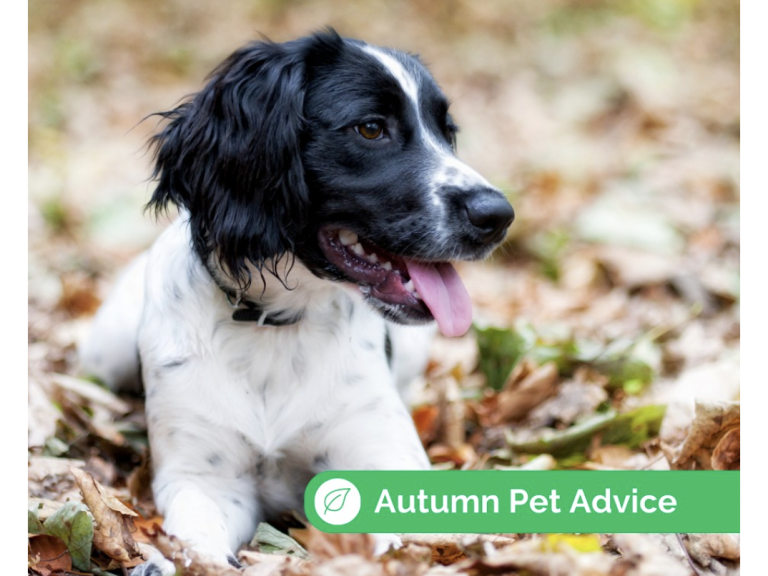
After such a long hot summer, it’s hard to imagine that soon we’ll be back to darker nights with cold, damp days. Some diseases are seasonal and can be more of a threat at this time of year. By learning about them, we can keep our pets safer.
These tiny mites are found in long grass and dense foliage from late summer through to the autumn. They climb up and swarm onto passing mammals, including dogs, cats and rabbits. Harvest Mites feed for two or three days on thin areas of skin, such as the ear flap and between the toes, although they can be found anywhere on the body. As they are bright orange in colour, they can look like orange dust on the animals’ coat, and can be seen by the naked eye as tiny dots. They cause intense skin irritation and a considerable amount of discomfort.
If you see these mites on your pet, take your pet to the vet as you will need a spray to get rid of them. Your vet will also be able to give your pet some medication to help with the itching if it is very bad. If your rabbit gets infested, get advice from your vet as the anti-parasitic sprays commonly used on dogs and cats can be harmful to rabbits.
SCI is an illness which may be related to harvest mite infestation, although at this stage the true cause has yet to be identified. The other theory (which has now been discounted) was an allergy to types of woodland fungus. SCI was first reported in 2010, and seems to be confined to autumn. Affected dogs always seem to have been in woodland areas within three days before developing the symptoms. It’s a rare but very serious condition and can be fatal if not caught early.
Symptoms of SCI:
This could be a list of symptoms for many different gastrointestinal upsets, so it is best to phone your veterinary practice for advice if you are worried. The vomiting and diarrhoea leads to life threatening dehydration. The good news is that caught early with intensive supportive veterinary treatment, most dogs recover within 10 days.
You have probably read about this nasty disease in the press over the last few years. Like SCI, the cause is still unknown, but as case numbers go up in the cold, wet months; it is something dog owners need to know about this autumn.
What is known:
These diseases sound scary but they are rare and many millions of dog walks take place in the countryside every year without any problem. So be aware but enjoy your walks!
My husband and I run thebestof Shrewsbury. We have over 40 years' combined marketing experience (scary) to help businesses grow. Thebestof Shrewsbury promotes local businesses through our high-traffic...
The following Cookies are used on this site. Users who allow all the Cookies will enjoy the best experience and all functionality on the site will be available to you.
You can choose to disable any of the Cookies by un-ticking the box below but if you do so your experience with the Site is likely to be diminished.
In order to interact with this site.
To show content from Google Maps.
To show content from YouTube.
To show content from Vimeo.
To share content across multiple platforms.
To view and book events.
To show user avatars and twitter feeds.
To show content from TourMkr.
To interact with Facebook.
To show content from WalkInto.